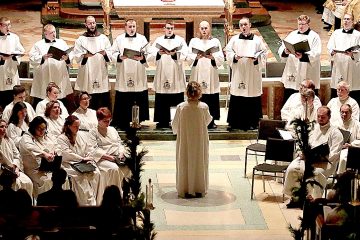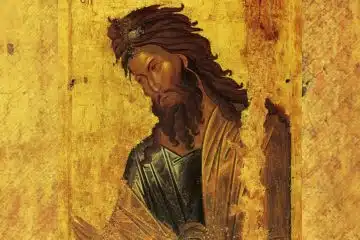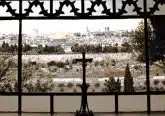Pope Leo XIV to bestow pallium on these 8 U.S. archbishops
Vatican City, Jun 27, 2025 / 06:00 am
Pope Leo XIV on Sunday will bless and bestow the “pallium” — a white woolen vestment symbolizing pastoral authority and unity with the pope — on 48 new metropolitan archbishops, including eight from the United States, in a return to a custom changed by Pope Francis in 2015.
Leo will impose the pallia at a Mass for the solemnity of Sts. Peter and Paul in St. Peter’s Basilica on June 29.
The U.S. archbishops who will be in Rome to receive the pallium on June 29 are
Robert Casey of Cincinnati,
Richard Henning of Boston,
Jeffrey Grob of Milwaukee,
Joe Steve Vásquez of Galveston-Houston,
Edward Weisenburger of Detroit,
Michael McGovern of Omaha,
W. Shawn McKnight of Kansas City in Kansas, and
Cardinal Robert McElroy of Washington.
Archbishop Ryan Pagente Jimenez of Agaña, Guam (a U.S. territory), is also expected to be imposed with the pallium.
The pallium is a narrow, circular band of white wool with pendants hanging down the front and the back. It is adorned with six small black crosses and three pins (called spinulae), which resemble both thorns and the nails used to crucify Jesus.
It is bestowed on the Latin-rite patriarch of Jerusalem and metropolitan archbishops — the diocesan archbishop of the primary city of an ecclesiastical province or region — as a symbol of communion, authority, and unity with the pope and his pastoral mission to be a shepherd for the people of God. The pope also wears the pallium over his chasuble when he is celebrating Mass.
Until Pope Francis changed the policy in 2015, it had been the custom for centuries for the pope to impose the pallium on the shoulders of each new metropolitan archbishop created in the past year.

Ten years ago, Pope Francis opted to only bless the pallia and then give them to each of the new archbishops to be vested by the apostolic nuncio in their own archdiocese as a sign of the archbishop’s relationship with the local Church.
According to the master of liturgical ceremonies, Archbishop Diego Ravelli, Pope Leo will be both blessing and personally imposing the pallia on the archbishops.
Before the vestments are bestowed on the metropolitan archbishops, they are placed for a time in a spot near the tomb of St. Peter, under the main altar of St. Peter’s Basilica, to reinforce the bishop’s connection to Peter through apostolic succession.
The tradition of the pope giving a pallium to select bishops began as early as the sixth century, though some historians believe a cloak-like version of pallium existed and was worn by Christians in the first century. By the ninth century, all metropolitan bishops were expected to wear the pallium in their territory.
Another tradition tied to the pallia and believed to date back in various forms to the sixth century is the blessing of the lambs from which the woolen stole, or at least a part of it, is made.
For centuries, every year on Jan. 21, the feast of St. Agnes, two young lambs were brought to the Basilica of St. Agnes to be blessed by the pope. They would then be entrusted to the Benedictine nuns of the Basilica of St. Cecilia to be sheared and their wool woven into the new pallia. While today the pallia are still created from lamb’s wool, the papal blessing of the lambs was discontinued by Pope Francis a few years into his pontificate.
At Pope Benedict XVI’s inaugural Mass on April 24, 2005, he explained the symbolism of the pallium and the lamb’s wool as “meant to represent the lost, the sick, or weak sheep which the shepherd places on his shoulders to carry to the waters of life.”













